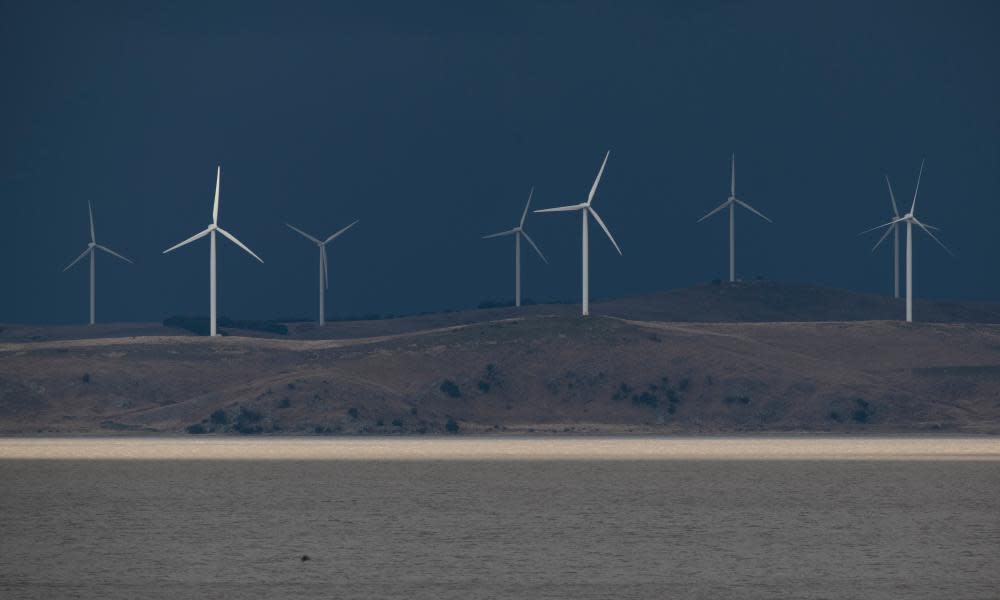Windfarm development could be even harder under NSW plan, renewables sector fears

The plan for new windfarms proposed by the New South Wales government has raised “serious concerns” within the renewable energy sector, with developers warning it will make it even harder to proceed with projects in the state.
The Minns government this week released its draft wind energy guideline to provide the community, industry and regulators with the “key planning considerations” for onshore windfarms. These include visual, noise and biodiversity impacts.
Renewable energy developers were surprised by the extent of the state that was identified as “less suitable” for wind energy. This description extends over most of two of NSW’s five special renewable energy zones, located in New England and the state’s south-west.
Considerations included proximity to major roads and sensitive public viewpoints, native vegetation and location near significant migratory bird flight routes.
“Site selection factors often compete, and due to the large scale of wind energy development, it is challenging to find sites that do not have significant conflicts,” the guideline said. “Projects must also be designed in a cost-effective manner to provide benefits to energy consumers and reduced electricity costs.”
The Clean Energy Investor Group chief executive, Simon Corbell, said members had raised “serious concerns about the impact of the new guidelines on clean energy development in NSW”.
“At a time when we need to accelerate regulatory timeframes, these new proposals send the wrong messages to industry and will make new project development more difficult,” Corbell said.
Nicholas Aberle, a policy director at the Clean Energy Council, said the mapping indicated windfarms would not be built in the state’s far west, meaning most would have to be located in the east and south.
Deeming a region as “less suitable” is “unhelpful during the early stages of the consultation process”, Aberle said.
Related: How a false claim about wind turbines killing whales is spinning out of control in coastal Australia
“The NSW government is keenly aware that they cannot meet their own energy objectives without wind energy, so it is our full expectation that the final guidelines will support rapid and responsible development of the industry,” he said.
Under the previous Coalition government, NSW legislated renewable energy zones and a road map to expedite investment, making it among the most attractive among Australian states for developers.
However, investors have lately cooled on the state, saying a slow planning process was diverting interest elsewhere even before the new guideline’s release.
“The new visual assessment process is much more onerous, doubling the number of households requiring a custom, visual assessment out to over 7km for a 250-metre tall wind turbine,” one senior manager said.
A spokesperson for the Department of Planning and Environment said the map was “a tool which provides an indication of where development is likely to be located”, including access to quality wind resources.
“The mapping does not preclude development outside of the mapped areas, nor does it affect the assessment process for projects in these areas,” the spokesperson said. “Wind energy development is much more constrained than solar because the wind resource is less prevalent. Therefore, it is more difficult to find suitable sites for wind energy across the state when directly compared to solar.”
The opposition energy spokesperson, James Griffin, welcomed the opportunity to provide feedback on the draft framework.
“The feedback we are hearing after more than half a year of the Minns Labor government is that it has provided little certainty to communities and industry when it comes to a coherent energy transition,” Griffin said.


